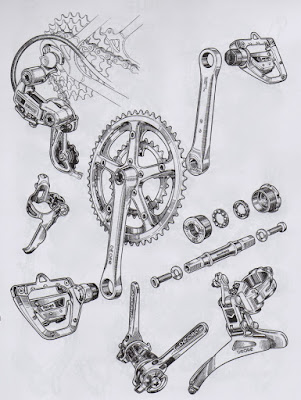Many, many years ago, I attended Catholic school. Like my classmates, I went to confession every Friday and mass on Sunday.
You weren't supposed to receive Holy Communion unless you'd confessed your sins. Of course, that meant just about all of us who went to the Catholic school partook of that most important (by the Church's reckoning, anyway) sacrament. I always wanted to ask how God saw whatever sins you might've committed between the time you went to confession and mass.
Not that I was so worried about receiving communion. After all, how many kids look forward to having flat, flavorless wafers put in their mouths and having to kneel, with eyes shut, and pray (or pretend to, anyway) silently as long as those wafers are in their mouths? Most kids probably wonder--as I did--why the wafer couldn't at least taste like chocolate or something?
Then there was something else we received from the church, if once a year: ashes. I know that having charcoal or whatever rubbed on your forehead is supposed to symbolize that to which we return, or some such thing. On Ash Wednesday, we were all supposed to be so marked. The nuns treated us juuust a little better (they were nuns, after all!) if we were.
Some people--usually old (or, at least, they seemed that way to us)--used to walk a little prouder--or, perhaps, just a little more smugly--with the smudges on their foreheads in full view. It was as if they had to show the world--God?--that they were indeed devout Catholics. Because they were older, I used to wonder whether that mark would help them if they fell down dead. Would God recognize them that much sooner and whisk them into their eternal reward?
I got to thinking about this, oddly, because today is Ride Your Bike To Work Day. Now, those of us who normally ride to work don't give it a second thought. About the only thing I did differently was to stop at the Transportation Alternatives table on the Bronx side of the Willis Avenue Bridge for their free coffee (which was pretty good, actually) and Kind bars. (I like the Blueberry Almond and Honey Oat!) And, oh yeah, to renew my membership.
Since I normally ride to work and my co-workers and friends know it, I don't feel the need to show it. But I got to thinking about how I might show off my concern for the environment and all of those other things that commuting by bike are supposed to signify, if I were so inclined.
Here's one way:
You weren't supposed to receive Holy Communion unless you'd confessed your sins. Of course, that meant just about all of us who went to the Catholic school partook of that most important (by the Church's reckoning, anyway) sacrament. I always wanted to ask how God saw whatever sins you might've committed between the time you went to confession and mass.
Not that I was so worried about receiving communion. After all, how many kids look forward to having flat, flavorless wafers put in their mouths and having to kneel, with eyes shut, and pray (or pretend to, anyway) silently as long as those wafers are in their mouths? Most kids probably wonder--as I did--why the wafer couldn't at least taste like chocolate or something?
Then there was something else we received from the church, if once a year: ashes. I know that having charcoal or whatever rubbed on your forehead is supposed to symbolize that to which we return, or some such thing. On Ash Wednesday, we were all supposed to be so marked. The nuns treated us juuust a little better (they were nuns, after all!) if we were.
Some people--usually old (or, at least, they seemed that way to us)--used to walk a little prouder--or, perhaps, just a little more smugly--with the smudges on their foreheads in full view. It was as if they had to show the world--God?--that they were indeed devout Catholics. Because they were older, I used to wonder whether that mark would help them if they fell down dead. Would God recognize them that much sooner and whisk them into their eternal reward?
I got to thinking about this, oddly, because today is Ride Your Bike To Work Day. Now, those of us who normally ride to work don't give it a second thought. About the only thing I did differently was to stop at the Transportation Alternatives table on the Bronx side of the Willis Avenue Bridge for their free coffee (which was pretty good, actually) and Kind bars. (I like the Blueberry Almond and Honey Oat!) And, oh yeah, to renew my membership.
Since I normally ride to work and my co-workers and friends know it, I don't feel the need to show it. But I got to thinking about how I might show off my concern for the environment and all of those other things that commuting by bike are supposed to signify, if I were so inclined.
Here's one way:

























